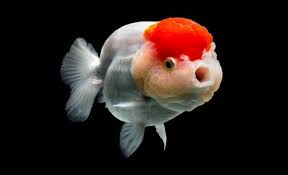China’s rich cultural history is filled with legendary creatures, but none are as significant as the dragon. Unlike the fire-breathing beasts in Western folklore, Chinese dragons are seen as benevolent and powerful beings, symbolizing wisdom, strength, and divine authority. For thousands of years, the dragon has been deeply intertwined with China’s political, social, and spiritual traditions, making it the ultimate representation of power. This article explores why dragons are considered a symbol of power in China, tracing their origins, their association with emperors, and their enduring influence in modern society.
The Mythological Origins of the Chinese Dragon
Chinese mythology dates the dragon’s origins back to ancient times, where it was believed to be a creature formed from the features of different animals. Some legends suggest that the dragon evolved from the totems of various tribes during China’s early civilization. As these tribes united, their symbols merged into a single, powerful entity—the dragon.
Ancient texts such as the Shan Hai Jing (Classic of Mountains and Seas) describe dragons as celestial beings capable of controlling water, bringing rain, and governing the rivers and seas. They were often depicted as long, serpentine creatures with scales like a fish, claws like an eagle, and whiskers resembling those of a catfish. These attributes gave them a majestic and awe-inspiring presence, making them the perfect symbol of natural forces beyond human control.
The Dragon as a Symbol of Imperial Authority
One of the primary reasons the dragon became synonymous with power in China was its close association with the emperor. During the Han Dynasty (206 BCE–220 CE), emperors began referring to themselves as the “Sons of the Dragon,” emphasizing their divine right to rule. The dragon was believed to embody tianming (the Mandate of Heaven), which granted legitimacy to a ruler’s reign.
By the Tang Dynasty (618–907 CE), the image of the dragon became strictly reserved for the emperor. The imperial robe, known as the longpao, was embroidered with golden dragons, signifying the ruler’s absolute authority. The throne was called the “Dragon Throne,” and even the emperor’s spoken words were known as the “Dragon’s Edict.” The number of claws on a dragon depicted in art also reflected status—five-clawed dragons were reserved for the emperor, while nobles and officials could only use dragons with four or three claws.
Dragons and Military Power
The dragon was not only a symbol of political power but also a representation of military strength. In ancient China, warriors often carried banners featuring dragon motifs, believing that the dragon’s spirit would bring them victory in battle. The dragon was also depicted on the imperial army’s armor, weapons, and flags, reinforcing the connection between dragons and dominance.
One of the most famous military symbols featuring a dragon was the Dragon Flag, used by the Qing Dynasty (1644–1912). This flag signified the emperor’s command over the nation’s military forces and projected an image of unchallenged strength.
The Dragon and Chinese Philosophy
Beyond politics and war, the dragon held deep philosophical significance. In Daoist and Confucian traditions, the dragon symbolized the ideal ruler—one who was wise, just, and capable of adapting to circumstances. The famous philosopher Confucius once compared a great leader to a dragon, highlighting the need for rulers to embody the dragon’s wisdom and adaptability.
In Buddhism, dragons were seen as protectors of sacred knowledge. Buddhist sutras mention naga, serpent-like deities that safeguarded scriptures and enlightened beings. These mythological creatures blended seamlessly with the Chinese dragon, reinforcing its role as a guardian of wisdom and divine power.
The Dragon’s Role in Chinese Festivals and Culture
Dragons continue to play a major role in Chinese cultural traditions. The Dragon Dance, a key performance during the Lunar New Year, represents prosperity, good fortune, and the power to drive away evil spirits. During the Dragon Boat Festival, teams race in dragon-shaped boats, an event that has its roots in ancient legends of strength and perseverance.
Even in modern China, dragons are omnipresent in architecture, art, and business. Many companies incorporate the dragon into their logos and brand names, signifying power, success, and prestige.
Dragons in Modern China
Despite China’s rapid modernization, the dragon remains a powerful national symbol. In the 20th and 21st centuries, Chinese leaders have embraced the image of the dragon to represent China’s rising influence on the global stage. Many patriotic slogans reference the “Awakening of the Dragon,” portraying China as a nation reclaiming its historical strength.
Today, the dragon continues to inspire Chinese identity and pride. Whether in the form of statues guarding temples, designs on currency, or references in political rhetoric, the dragon’s legacy as a symbol of power remains unshaken.
Conclusion
The dragon’s status as a symbol of power in China is deeply rooted in history, mythology, and tradition. From its mythical origins as a divine being to its role in imperial rule and military strength, the dragon has long represented the highest authority. Even in modern times, the dragon continues to be a source of national pride and cultural significance. As China moves forward, the dragon remains a timeless emblem of strength, wisdom, and dominance.










